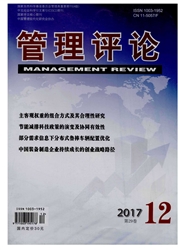

 中文摘要:
中文摘要:
目的掌握上海市长宁区中小学校直饮水水质状况,评价学校直饮水水质对学生的健康风险。方法以上海市长宁区30所中小学为研究现场,在2014年6、10月及2015年1、3月(分别代表夏、秋、冬和春季)各进行1次直饮水水样采集。依据CJ 94—2005《饮用净水水质标准》对直饮水水质卫生状况进行评价。采用美国国家科学院(NAS)提出的健康风险评估四步法对19项化学指标建立直饮水健康风险评价模型,按致癌风险和非致癌风险分别进行评估。结果长宁区直饮水水质检测结果显示,个别指标出现不同程度超标,其中菌落总数超标率最高(22.1%),浑浊度、铝、镉和铬(六价)轻度超标,超标率分别为1.8%,1.8%,0.9%和0.5%。在校期间饮用此类水对小学生、初中生和高中生的各指标终身非致癌风险总和分别为0.24、0.07和0.05,均低于有害风险阈值;对小学生、初中生和高中生的各指标终身致癌风险总和分别为1.5×10~(-5)、2.0×10~(-6)和3.6×10~(-7),均处于可接受水平。结论调查期间上海市长宁区中小学校直饮水部分指标存在超标现象,但学生在校期间饮用后可能不会出现明显的健康风险。
 英文摘要:
英文摘要:
Objective To investigate the sanitary status and assess the health risks of direct drinking water in middle and primary schools in Changning District, Shanghai. Methods A total of 30 middle and primary schools were chosen as the research sites in Changning district, Shanghai. Direct drinking water samples were collected in June and October of 2014, and January and March of 2015, representing the four seasons. The water quality was evaluated according to the CJ 94-2005 Water Quality Standards for Fine Drinking Water. Based on the health risk assessment method proposed by U.S. National Academy of Sciences, the establishment of a risk assessment model for direct drinking water with 19 chemical indices was explored. The non-carcinogenic and carcinogenic risks were assessed respectively. Results The unqualified rate of total count of bacteria was the highest(22.1%); Turbidity, aluminum, cadmium and chromium(Ⅵ) were graded as slight contamination, with unqualified rate of 1.8%, 1.8%, 0.9% and 0.5%, respectively. If this kind of direct drinking water was for drunk long-term by students from primary school, junior high school and senior high school, the sum of the non-carcinogenic risks was 0.24, 0.07 and 0.05 respectively, which were all significantly lower than the risk threshold. Accordingly, the sum of the carcinogenic risks was 1.5×10~(-5), 2.0×10~(-6) and 3.6×10~(-7) respectively, which were all under the acceptable level. Conclusion Over standard phenomena were seen in some indices in direct drinking water at the middle and primary schools of Changning district, Shanghai, but no significant health risk was seen.
 同期刊论文项目
同期刊论文项目
 同项目期刊论文
同项目期刊论文
 期刊信息
期刊信息
